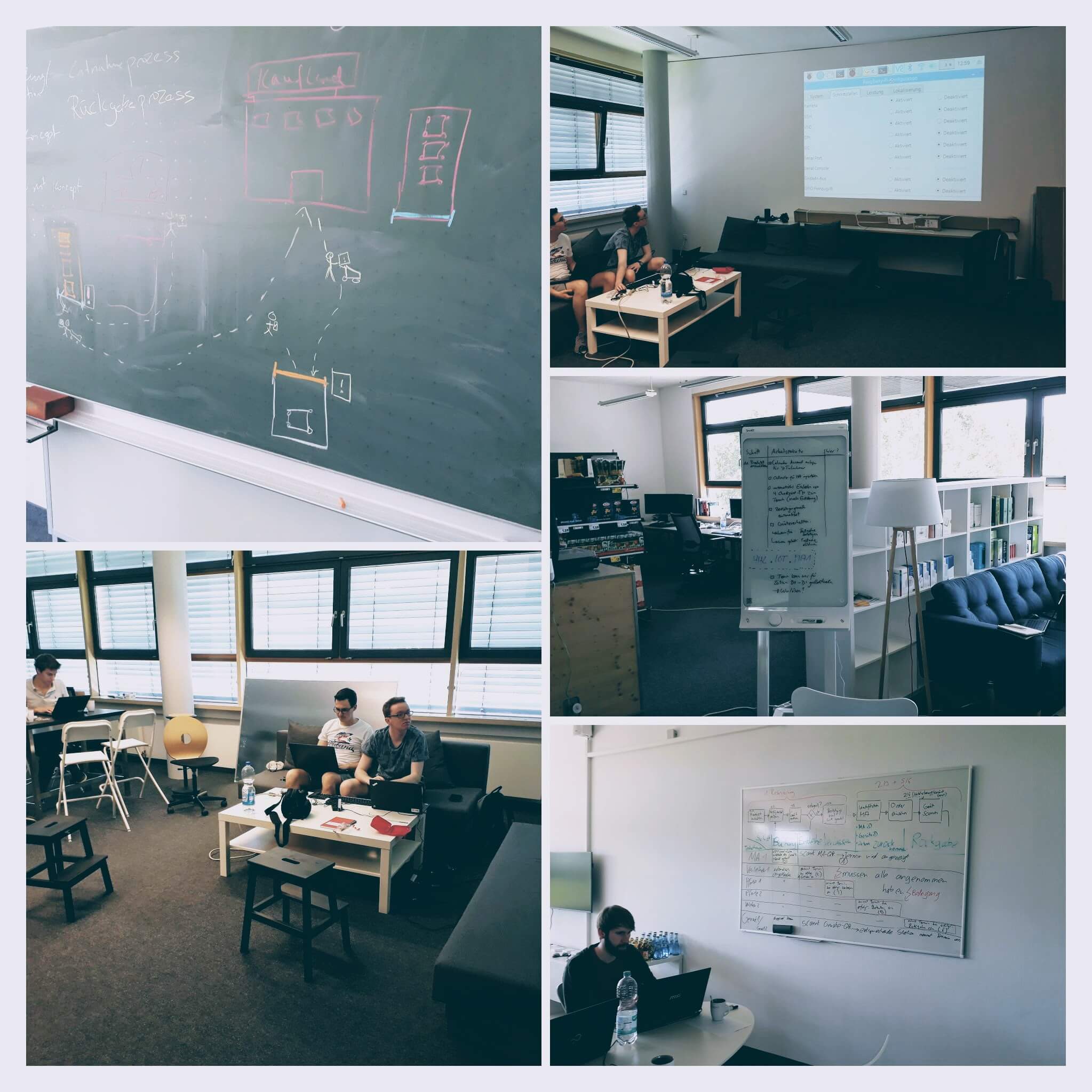This term’s IoT hackathons took place end of June 2019 as part of my IoT lecture in the masters programs Services Computing.
The hackathon was entitled “Bridging the gap: How IoT connects the digital and real world with each other”. It refers to the economic principle of IoT as described by Elgar Fleisch and others, see for example Business Models and the Internet of Things by Elgar Fleisch (ETH Zurich / University of St. Gallen) Markus Weinberger (Bosch Software Innovations GmbH) Felix Wortmann (University of St. Gallen)
Two students teams have worked on their projects to demonstrate this principle. This exercise intends to form a deeper understanding of the foundations of IoT business models. The following video shows the demonstration of a team
Video of a SCM hackathon project
Project Frame
Students were presented with two scenarios:
- Equipment or device rental service
- Parking management for shopping carts in a supermarket
These two state-of-art situations are supported by digital services, e.g. a device’s electronic rental record or the locatening of shopping carts. However, both also involve several manual activities. Apart from the effort, additional problems may arise, if these activities contain unintended errors. The information system and the real world situation get out of sync. This may lead to lost devices in the case of device rentals. In the other use case, supermarket customers may have a worse shopping experience when facing crowded shopping park boxes while in an other area customers will not get carts at all.
Hackathon Topic: Bridging the Gap
I have introduced various IoT principles and technologies during the lecture. At a hackathon, students propose how IoT may generate a value by carefully connecting and combining digital processes with real world activities. Students are required to demonstrate how IoT reduces so-called media breaks. These are situations where human actors inefficiently mediate between a real world situation and a digital support process. Reduced media breaks will result in an improved sync between the digital service and the real world. This bridging-the-gap effect forms the foundation of the economic principle of IoT. It enables a more efficient ressource management and may also result in novel service models. This advantage can be exploited in a business model afterwards.
Hackathon
In a prepartion meeting two weeks before the hackathon, the teams finally selected and defined their project; either from the domain of the rental service or the shopping cart management. Missing the harware was ordered and open questions .
The limited time of just two days made it necessary to limit the effort to the minimum viable product (MVP), which demonstrates basic ideas to achieve the value of the bridging-the-gap. In the two days of the intense project work, the students have setup an efficient team organisation, have designed process models, implemented software, and wrote their report for project documenting.

In their final documentation, the team projects describe several important IoT concepts, such as embedding, smart objects, IoT interaction design principles, economic principles and architecture design. IoT embedded in devices sense electronically real-world activities and update digital services. Latter adjust their behavior and can better support use case. The user experiences this tighter connection as an improved service.
Call to Action
Check out the team presentations available online
- Parking management for shopping carts (lang: german)
- Rental service: no online ressource available; will be updated
